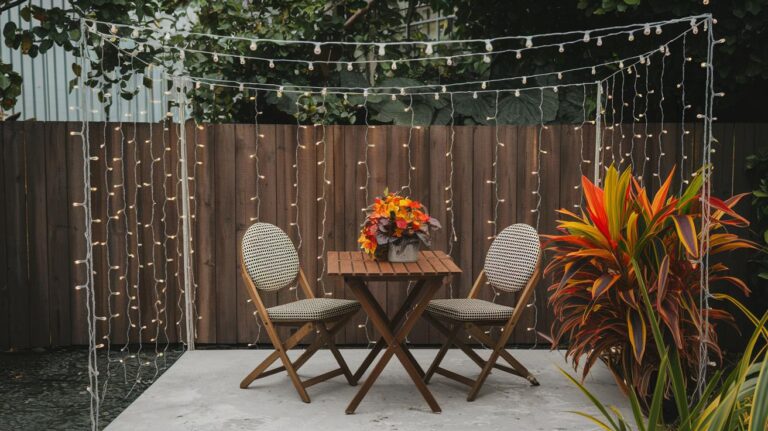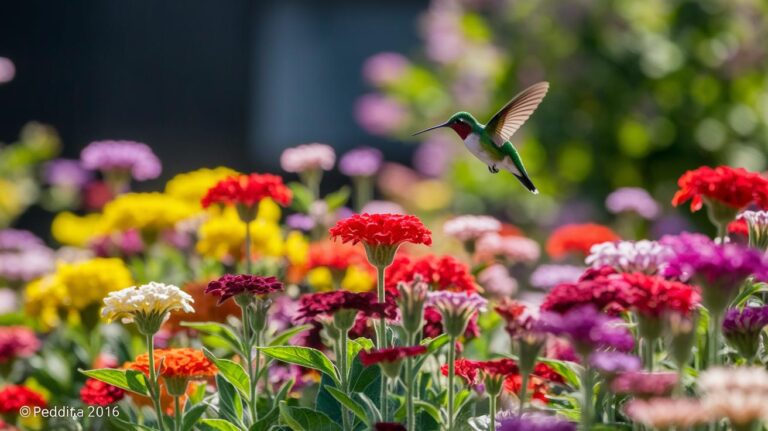Butterfly Garden Plants for Shade Stunning Nectar Oasis
Ever wonder why no butterflies show up in your shady nook?
It’s not about more sun. It’s about picking the right flowers, you know?
Picture soft green leaves crumbling between your fingers, bright impatiens (annual flowers that live one season) popping like confetti.
Astilbe (perennials with feathery flower plumes) filling the air with sweet morning scents.
And tiny violet blooms waving hello to fritillaries (butterflies with checkered wings).
With just a handful of shade-friendly perennials (plants that come back every year) and a few shade-loving annuals (plants that bloom for one season), you can spin that dark corner into a fluttering nectar oasis.
Oops, I meant shade-loving annuals.
By the way, my cat adores napping among these blooms.
Say goodbye to empty shadows and hello to soft wings dancing all summer!
Let’s dive into the best plants that’ll bring butterflies to even your shadiest spots.
Essential Shade-Tolerant Butterfly Garden Plants
Have a shady corner? Let’s turn it into a butterfly magnet with these shade-loving picks. We’re mixing perennials (plants that come back every year) and annuals (plants that bloom all season then go).
- Impatiens walleriana (blooms June to September; needs moist soil and partial shade; USDA zones 2 to 11)
- Astilbe chinensis (blooms May to July; likes moist shade; zones 3 to 8)
- Heuchera spp. (blooms June to July; thrives in dry shade; zones 4 to 9)
- Pulmonaria officinalis (blooms March to May; needs moist shade; zones 3 to 8)
- Solidago flexicaulis (blooms August to October; partial shade; zones 3 to 9)
- Viola spp. (blooms March to May; moist shade; zones 3 to 8; host plant for fritillary butterflies)
- Asarum canadense (wild ginger; shade host for swallowtail caterpillars; zones 3 to 8)
- Sambucus racemosa (red elderberry; nectar-bearing shrub; zones 3 to 7)
- Lamium galeobdolon (yellow archangel; groundcover with spring blooms; moist shade; zones 3 to 8)
- Lobelia siphilitica (blue cardinal flower; blooms August to September; moist shade; zones 3 to 9)
Impatiens walleriana brightens shady beds from June to September. Its cheerful blooms peek out from the green leaves. It needs evenly moist soil and just a bit of sun.
And lobelia siphilitica joins the party in late summer with tall blue spires that attract skippers and swallowtails. They love landing on those narrow petals.
Astilbe chinensis brings feathery plumes and a soft, sweet scent to damp corners from May through July. Have you ever smelled a bloom at dawn? It’s pure magic.
Pulmonaria officinalis pops open its blue and pink flowers in early spring, feeding bees and fritillary caterpillars in the cool shade.
Heuchera and Lamium team up to fill gaps, Heuchera with ruffly leaves in dry shade and Lamium as a spring groundcover in moist spots. They keep things green and snug.
Viola species aren’t just dainty violets. They host tiny fritillary caterpillars under their petals. Surprise guests!
Asarum canadense, that low wild ginger, hides swallowtail eggs in its leaf litter. Pretty sneaky.
Solidago flexicaulis puts up golden sprays from August into October in dappled light. And Sambucus racemosa grows into a nectar-rich shrub at eye level.
Plant early, mid, and late bloomers together so you’ll have fluttering wings from spring through fall. Mulch around the roots to keep the soil cool and moist.
Soil Preparation and Planting Tips for Shade Butterfly Beds

First, clear away sticks, old leaves, and spent mulch. Then test your soil acidity (soil pH, with a reading between 6.0 and 7.0). Feel the cool, dark soil as you work. That sweet spot helps plants that love shade and moisture.
Here’s a quick planting playbook:
- Mix in 2 inches of compost (decayed organic matter that enriches soil) or leaf mold (decomposed leaves).
- Spread 2 inches of bark-chip mulch (little wood pieces) to keep roots cool and hold moisture.
- Water slowly so the soil drains well but stays damp. Aim for about 1 inch of water each week.
- Plant perennials 12 to 18 inches apart. Set the root flare (where roots meet stem) right at ground level.
- In spring, top-dress with organic slow-release fertilizer. Look for a mix marked 5-5-5 NPK.
Think of your soil like a cozy blanket wrapping roots in soft fluff. When you tuck in moisture-loving butterfly hosts like impatiens or lobelia, you’ll see them settle faster and send out fresh shoots sooner. Have you ever smelled fresh lobelia in the morning breeze? Wow.
Planting at the right depth and keeping soil just moist builds strong roots that feed nectar-rich blooms all season.
Oops, spilled a handful of mulch there, but hey, that’s part of the fun.
Design Strategies for a Shady Butterfly Garden
Think of your shady spot as a secret stage for fluttering wings. Tall trees like maples or dogwoods form a canopy (upper tree layer) that filters sunlight into soft patches. Below that, understory shrubs (smaller shrubs beneath big trees) bloom in the shade and feed hungry butterflies. And at ground level, perennials (plants that live more than two years) fill in with bright nectar and landing spots.
Bring the color close with containers. Tuck pots of impatiens and lobelia around benches and tables. If you need inspiration, check out shade ideas for backyard. Container gardening in shade keeps blooms within easy reach of you and delicate skippers.
Soft ornamental grasses (grass varieties prized for looks) add movement in the breeze. Try Carex species for a fluttery, whispering backdrop. And ferns such as Dryopteris toss out lacy fronds (leaf-like fern parts) that deepen the green stage behind your nectar flowers. Yes!
Group plants by when they bloom so butterflies sip nectar from spring into fall. Start with early ferns and Astilbe, then summer impatiens, and finish with lobelia and goldenrod for late-season visits. Add a shallow puddling dish (a low tray for butterflies to sip minerals) or birdbath with smooth stones so they can drink safely.
Winding paths edged with Pachysandra (low-growing groundcover) turn a small shade plot into a playful circuit. By the way, I like to tuck a little stone bench in a bend for quiet watching. Your garden will feel full of surprises and alive with gentle winged visitors.
Seasonal Care for Shade Butterfly Plants

In early spring (March–April), peek at Pulmonaria (lungwort, a shade-loving plant) and Viola (wild violet) unfurling in cool shade. Those spotted lungwort blooms glow like tiny lanterns in dewy corners. Viola’s sweet scent drifts on the morning breeze. Butterflies and early bees follow that scarce nectar right to your garden floor.
By mid-summer, Astilbe’s soft pink plumes and Heuchera (coral bells with ruffled leaves) keep nectar flowing. I love brushing my hand through those feathery spikes at dawn. They make cozy hideouts for resting caterpillars and sipping butterflies on warm afternoons. It’s like a secret butterfly lounge right in your backyard, you know?
Late summer into fall (August–October) is all about Solidago flexicaulis (zigzag goldenrod). Its golden sprays glimmer in dappled shade and call in late-season butterflies. You’ll see skippers and fritillaries flutter from bloom to bloom, gathering minerals before cooler days arrive. Nature’s last snack break.
When late winter arrives, grab your shears and cut back dead stalks to ground level. Then spread a 2-inch layer of mulch (small wood chips or shredded bark) around the crowns (plant bases by the soil). It’s like tucking tender roots into a cozy blanket against frosty nights. I guess that feels right.
Back in early spring, divide crowded perennials (plants that come back every year) at their clumps (groups of stems) and prune shrubs (woody plants) after blooms fade. Pull roots apart gently so each piece has a bud or two. That fresh start gives you stronger shoots and fuller summer blossoms. Planting now sets you up for summer harvest.
Enhancing Biodiversity and Natural Pest Management in Shade
A shade garden with native butterfly plants brings more wings to your yard. Try shrubs like Viburnum spp. and Epimedium grandiflorum. They offer sweet nectar (the flower’s sugary drop) and host spots (plants for caterpillar eggs and caterpillars to munch). These shrubs tuck under tall trees and feed butterflies without much fuss. Check out best native plants for pollinator gardens for more ideas. Have you ever watched a butterfly flutter down to sip morning dew?
Here are simple ways to welcome pollinators and keep pests away:
- Plant deer-resistant shade favorites like lungwort (Pulmonaria), coral bells (Heuchera), and ferns. Hungry deer will wander off.
- Try companion planting in shade: nestle clusters of wild violets among your blooms. Caterpillars adore those hidden leaves.
- Grow insectary plants (those that lure helpful insects) such as yarrow (Achillea millefolium) and feathery fennel. Lacewings and ladybugs will move in and snack on leaf-eating pests.
- Mix a gentle spray of neem or mild insecticidal soap (just soap, water, and a drop of dish soap) for any buggy spots. Skip strong chemicals so your good bugs stick around.
- Tag each host plant with a little stake or label. Then you won’t accidentally yank out a caterpillar’s dinner.
- Gather fallen leaves or twigs into small shelters. Caterpillars and chrysalises (butterfly cocoons) will find safe hiding spots.
These steps guide butterflies from egg to full wing and keep your shady corner buzzing with life. Planting now sets you up for a summer full of fluttering friends. Oops, I almost forgot, grab some leaf litter before you tidy up!
Final Words
Ready to fill your shady corners with Impatiens walleriana, Astilbe chinensis and other shade-lovers? You’ve got soil prep tips (test pH, add compost (decayed organic matter) and mulch), a layered design plan and a care schedule for every season. Plus, you learned how to invite pollinators and keep pests at bay with native shrubs and insectary flowers.
Go ahead, pick your favorites from our list of butterfly garden plants for shade. Your yard’s about to buzz with color and joy.
FAQ
What are the best shade-tolerant butterfly garden plants?
- Impatiens walleriana (June–September bloom)
- Astilbe chinensis (May–July)
- Heuchera spp. (June–July)
- Pulmonaria officinalis (March–May)
- Solidago flexicaulis
- Lobelia siphilitica
How do I prepare soil for shade butterfly beds?
1. Clear debris.
2. Test soil pH and aim for 6.0–7.0.
3. Mix in 2 inches of compost or leaf mold.
4. Apply 2 inches of bark-chip mulch.
5. Space perennials 12–18 inches apart.
6. Water about 1 inch per week.
What design tips help a shady butterfly garden thrive?
- Layer canopy trees, understory shrubs, and perennials for varied height.
- Place impatiens and lobelia in containers near seating areas.
- Add Carex grasses for texture.
- Include a shallow dish for butterfly puddling.
- Create winding paths edged with Pachysandra.
How do I care for shade-loving butterfly plants by season?
- Early spring: Enjoy Pulmonaria and Viola blooms.
- Summer: Deadhead Astilbe and Heuchera.
- Late summer: Admire Solidago flexicaulis.
- Fall: Cut back old stalks and divide crowded perennials.
- Winter: Apply 2 inches of mulch for insulation.
How can I boost biodiversity and manage pests naturally in a shade garden?
- Plant native shrubs like Viburnum and Epimedium.
- Use deer-resistant Pulmonaria and intersperse Viola host patches.
- Grow Achillea to attract beneficial insects.
- Create leaf-litter shelters for ground-dwelling helpers.
- Spray neem oil or mild soap solution for gentle pest control.







